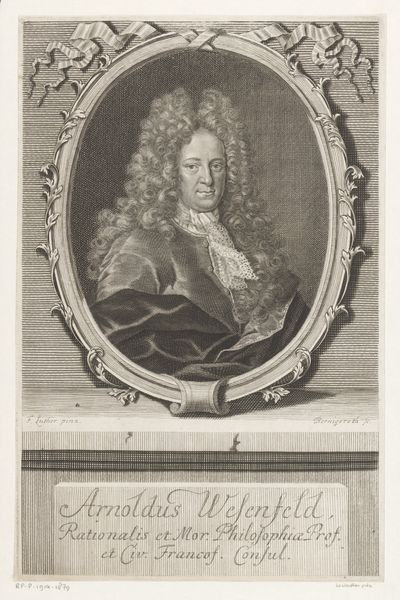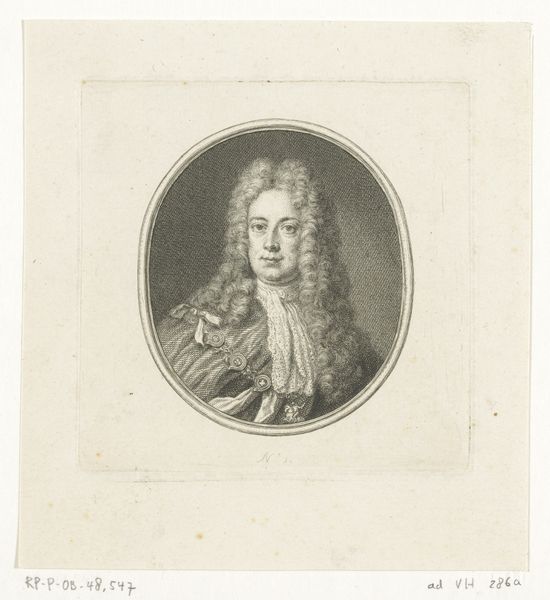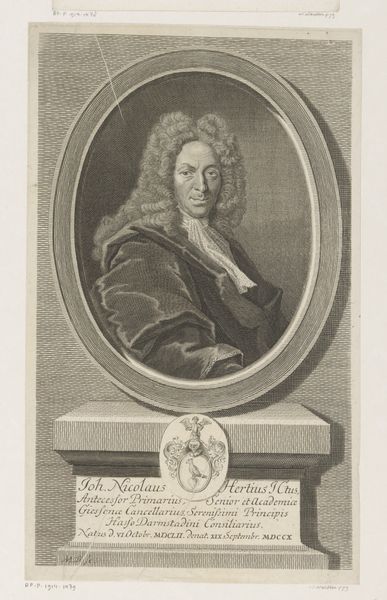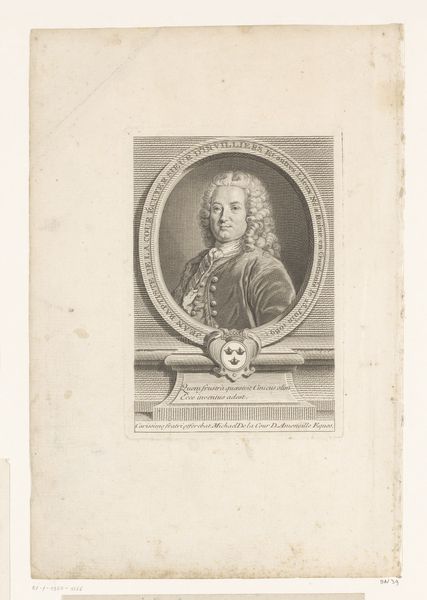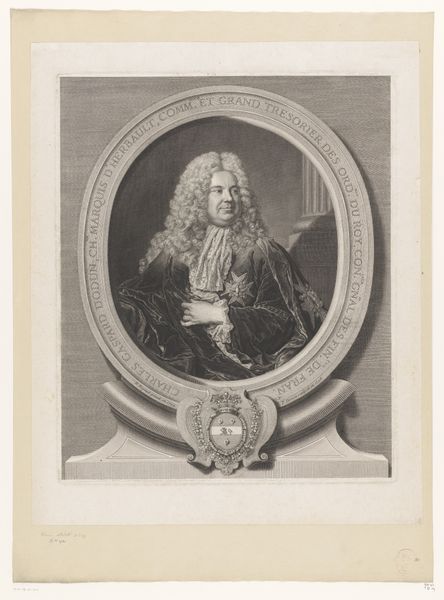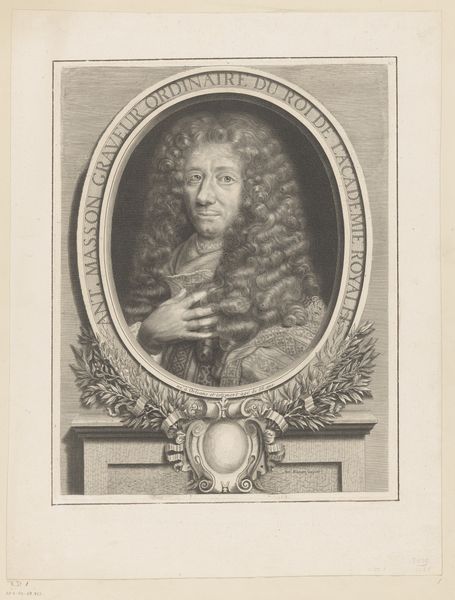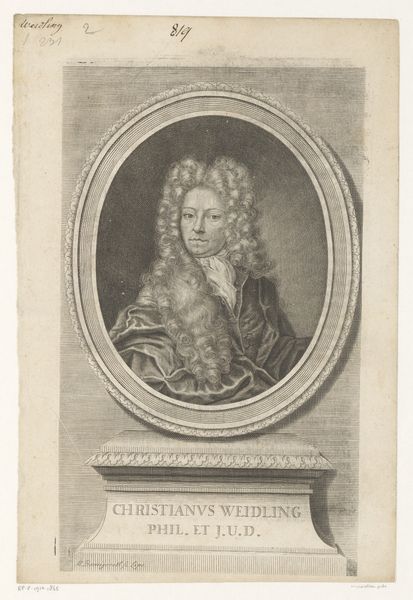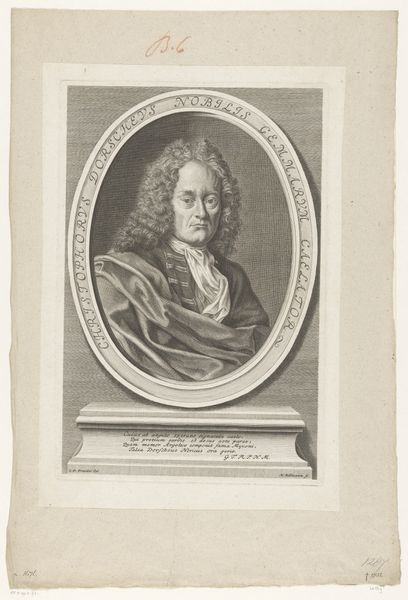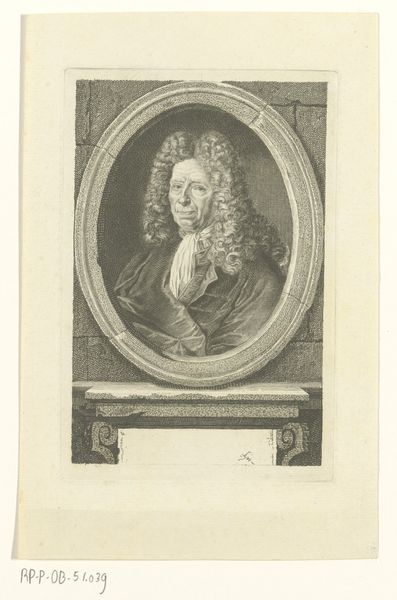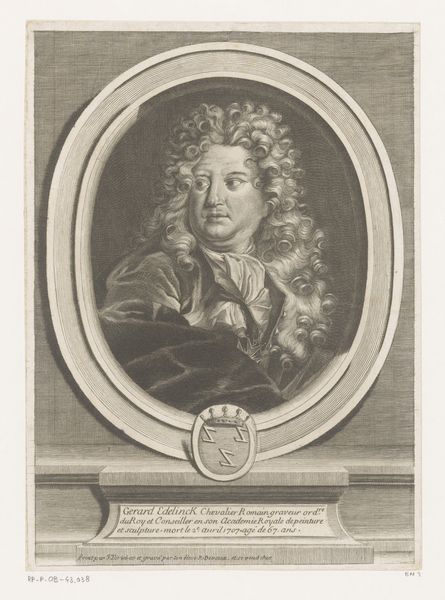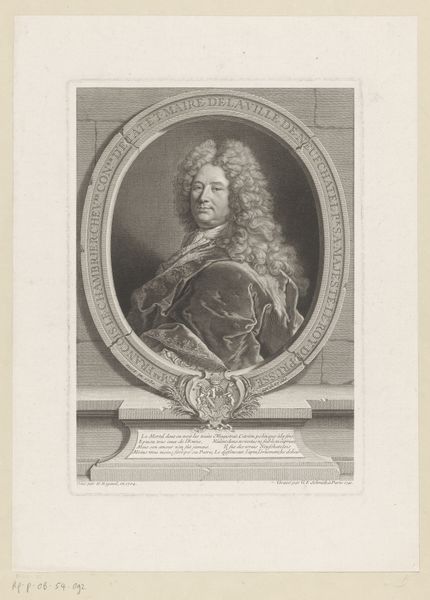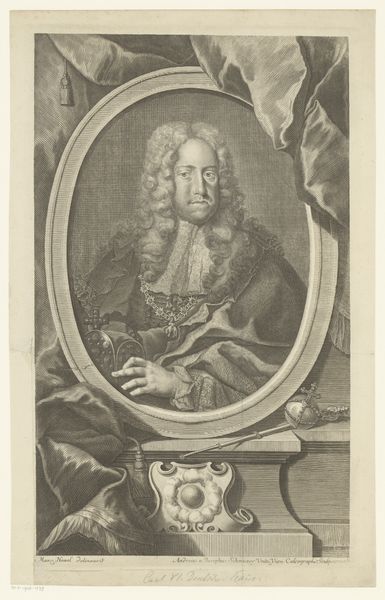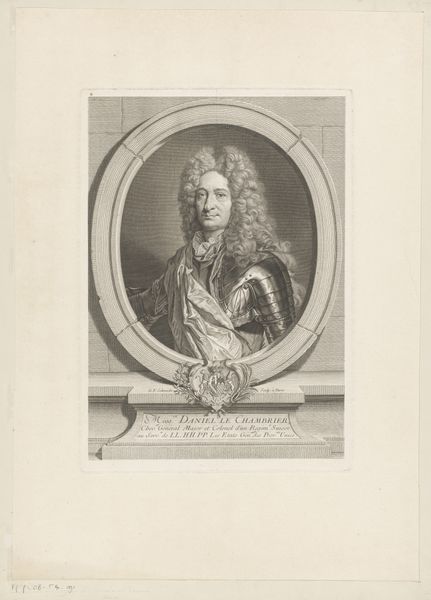
print, engraving
#
portrait
#
baroque
# print
#
old engraving style
#
history-painting
#
engraving
Dimensions: height 150 mm, width 110 mm
Copyright: Rijks Museum: Open Domain
Curator: This portrait exudes a certain… smugness. The detail in that wig! Editor: Indeed! We’re looking at a Baroque engraving, "Portret van John Law", created between 1729 and 1775 by Georg Friedrich Schmidt, currently held here at the Rijksmuseum. Its placement within an oval frame resting upon a pedestal gives him an immediate sense of monumentality. Curator: The circle is a classic symbol for continuity, immortality. It certainly speaks to a desire to cement Law’s legacy, doesn’t it? Even though his schemes ultimately crashed… Editor: Precisely. That framing and pedestal act almost like a public memorial. It raises so many questions about the creation and manipulation of public perception around powerful, sometimes infamous figures like Law. Curator: Notice how the eyes, even in this small engraving, draw you in. Schmidt clearly knew how to capture a sense of character through seemingly minor details. It’s also quite restrained compared to some Baroque works. It really lets the face speak for itself. Editor: But doesn’t that restrained presentation, the classic bust portrait style, sanitize Law’s actions? We’re left admiring a composition rather than interrogating the role he played in financial upheavals that impacted so many. The artistry might be overshadowing the ethical implications. Curator: Perhaps… Or maybe that tension – the beautiful craftsmanship presenting a controversial figure – creates the very discomfort that leads to questioning. Schmidt might be leaving that space for interpretation. We project onto him our anxieties about wealth, power, and social stability. Editor: It is true, that the choice to immortalize, to almost sanctify Law, serves to give a visual permanence that cannot be dismissed. I think, the work raises key questions about how art can legitimize or interrogate figures of power, regardless of the actual intentions. Curator: Absolutely, seeing him fixed in time with the Baroque emphasis on portraying likeness is indeed powerful. This becomes not only a portrait of Law, but a symbol of historical, political, and philosophical questions that continue to linger today. Editor: Indeed! A reminder that artistic representations of people in positions of power never appear in a social vacuum.
Comments
No comments
Be the first to comment and join the conversation on the ultimate creative platform.
